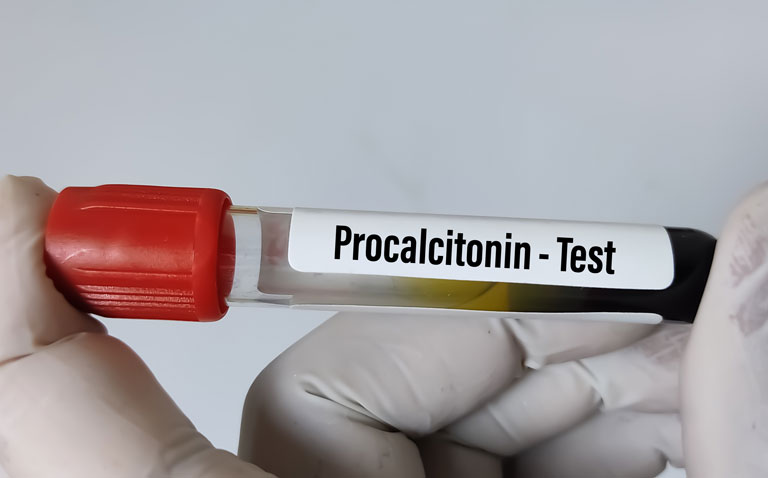The use of procalcitonin levels in an emergency department is unable to distinguish between viral and bacterial community-acquired pneumonia.
Symptoms of community-acquired pneumonia (CAP) include shortness of breath, coughing, fever and chest pain some of which such as fever and coughing, overlap with COVID-19. Determining whether the causative agent in CAP is bacterial or viral can be difficult and measurement of procalcitonin levels can serve as an important biomarker for the presence of a bacterial cause. Given that higher procalcitonin levels are more likely to indicate a bacterial rather than viral cause for CAP, a team from the Emergency Department, University Libre Bruxelles, Belgium, wondered if the measurement of procalcitonin levels could help distinguish between viral and bacterial CAP in patients infected with COVID-19 and retrospectively analysed data for a cohort of patients admitted to their emergency department.
All patients who were admitted with a suspicion of CAP had their procalcitonin levels measured. Subsequently, enrolled patients were those with clinical signs of a lower respiratory tract infection and with at least one symptom of acute respiratory illness, e.g., cough, dyspnoea, sputum production, tachypnoea and pleuritic chest pain. Other inclusion criteria were those with signs of an acute infection, e.g., temperature > 38oC, chills, altered mental status and a leucocyte count > 10,000/microL and oxygen saturation < 94%. Only patients who underwent both bacteriological, viral and radiological imaging (CT) within 48 hours of admission were subsequently included. Patients were classified as having bacterial CAP based on both microbiological analysis and the findings from the CT scan. Alternatively, patients were classed as having viral CAP in the absence of positive bacteriological findings and where the CT scan indicated a high suspicion of viral pneumonia.
Findings
During the period of the study, 3593 patients visited the emergency department with symptoms potentially related to COVID-19 and 151 were subsequently included in the analysis after applying the inclusion criteria, of whom, 138 had a microbiologically confirmed bacterial pathogen. Among those with diagnosed viral CAP, 112 had COVID-19-related pneumonia. The discriminatory accuracy of procalcitonin levels for bacterial and viral CAP were calculated from receiver operating characteristic (ROC) curves. The median procalcitonin levels were higher in bacterial CAP (0.53ng/ml vs 0.16ng/ml, bacterial vs viral, p = 0.005). Using the ROC curves to discriminate between viral and bacterial CAP generated an area under the curve (AUC) of 0.68 (95% CI 0.53 – 0.83). Based on a threshold procalcitonin level of > 0.5ng/ml, to identify bacterial CAP, gave a sensitivity of 52.2% and a specificity of 82%.
Commenting on their findings, the authors noted that there were no procalcitonin levels which were able to differentiate between bacterial CAP and COVID-19 associated pneumonia. Based on their findings, the authors calculated that the administration of antibiotics to those with procalcitonin levels > 0.5ng/ml would have resulted in the inappropriate treatment of 65.7% of patients with radiological signs of CAP.
They concluded that procalcitonin measurements upon admission in those with suspected CAP cannot accurately differentiate between bacterial or viral CAP.
Citation
Malinverni S et al. Is procalcitonin a reliable marker of bacterial community-acquired pneumonia in adults admitted to the emergency department during SARS-CoV-2 pandemic? Eur J Emerg Med 2021










